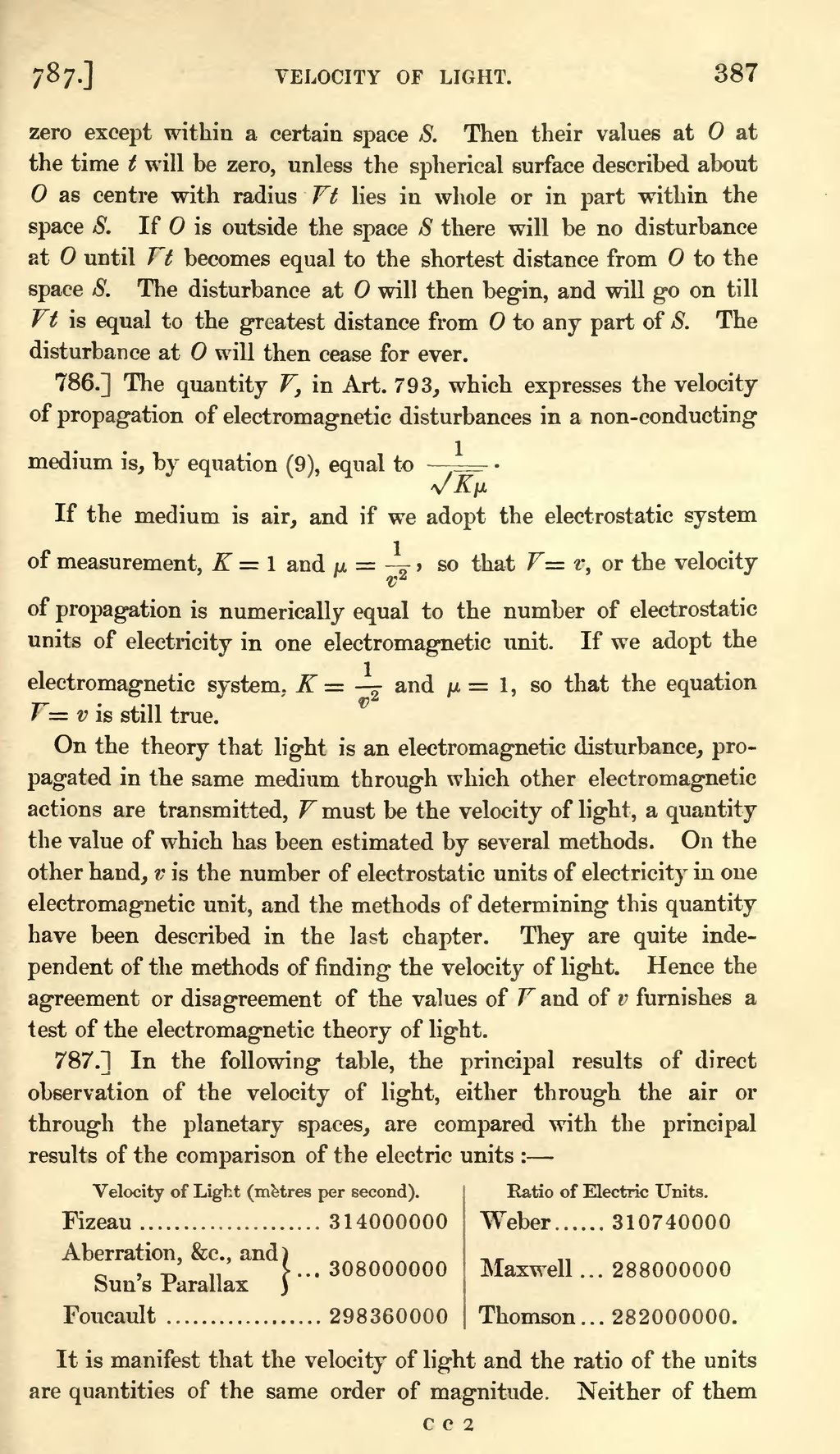zero except within a certain space . Then their values at at the time will be zero, unless the spherical surface described about as centre with radius lies in whole or in part within the space . If is outside the space there will be no disturbance at until becomes equal to the shortest distance from to the space . The disturbance at will then begin, and will go on till is equal to the greatest distance from to any part of . The disturbance at will then cease for ever.
786.] The quantity , in Art. 793, which expresses the velocity of propagation of electromagnetic disturbances in a non-conducting medium is, by equation (9), equal to .
If the medium is air, and if we adopt the electrostatic system of measurement, and , so that , or the velocity of propagation is numerically equal to the number of electrostatic units of electricity in one electromagnetic unit. If we adopt the electromagnetic system, and , so that the equation is still true.
On the theory that light is an electromagnetic disturbance, propagated in the same medium through which other electromagnetic actions are transmitted, must be the velocity of light, a quantity the value of which has been estimated by several methods. On the other hand, is the number of electrostatic units of electricity in one electromagnetic unit, and the methods of determining this quantity have been described in the last chapter. They are quite independent of the methods of finding the velocity of light. Hence the agreement or disagreement of the values of and of furnishes a test of the electromagnetic theory of light.
787.] In the following table, the principal results of direct observation of the velocity of light, either through the air or through the planetary spaces, are compared with the principal results of the comparison of the electric units:―
| Velocity of Light (mètres per second). | Ratio of Electric Units. | |||
| Fizeau | 314000000 | Weber | 310740000 | |
| Aberration, &c., and Sun's Parallax | 308000000 | Maxwell | 288000000 | |
| Foucault | 298360000 | Thomson | 282000000 | |
It is manifest that the velocity of light and the ratio of the units are quantities of the same order of magnitude. Neither of them













